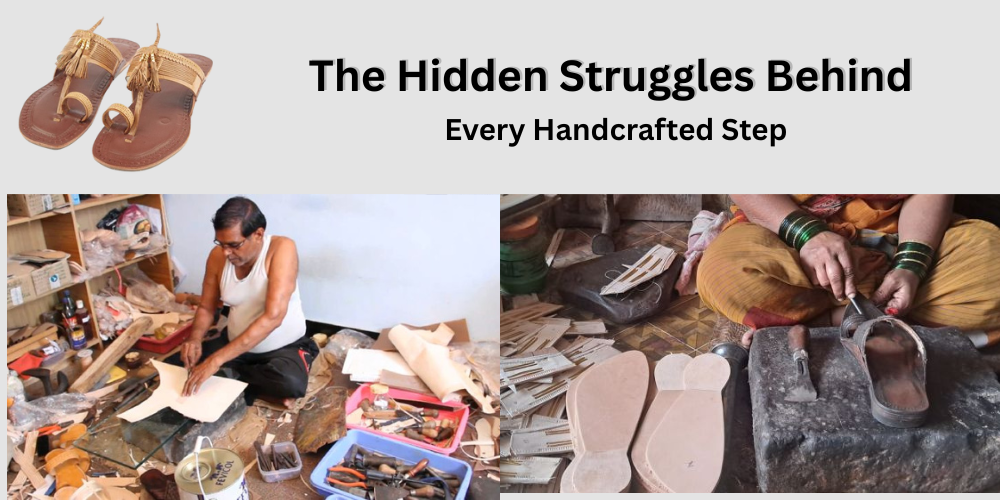Behind every handcrafted Kolhapuri chappal lies a story of silent struggle and resilience. While the craft speaks of tradition, the artisans face a reality of low income and fading recognition. Modern markets demand trend, not toil — leaving heritage behind. With no strong industry support, these age-old skills risk being lost to time.
This blog uncovers the unseen battles of those who keep tradition alive, step by step.
Raw Material Availability
One of the biggest challenges faced by entrepreneurs and artisans in the Kolhapuri chappal industry is the availability of high-quality raw materials. Due to environmental policies, almost all local tanneries in the Kolhapur district have shut down, forcing artisans to rely on tanneries from other states.
However, these outside tanneries prioritize export orders, supplying rejected or substandard leather to the domestic market. As a result, the quality of leather varies significantly, affecting the craftsmanship and durability of Kolhapuri chappals. Additionally, differences in tanning techniques across regions further contribute to inconsistencies in quality.
Adding to the challenge, fluctuations in leather prices create uncertainty, making it difficult for artisans to source high-quality materials at reasonable costs.
Addressing these supply chain issues is crucial for sustaining this centuries-old craft and empowering local artisans. What are your thoughts on improving raw material availability for traditional industries like this?
Competition from Machine-Made Footwear
Kolhapuri chappals are an iconic part of India's rich artisanal heritage, crafted with intricate detailing in natural shades of yellow, tan, brown, and black. However, the rise of mass-produced, machine-made footwear has disrupted this traditional industry.
Cheaper, factory-made alternatives flood the market, offering a wider variety of styles and colors that cater to modern consumer preferences. While these products attract buyers with affordability and trend-driven designs, they pose a major challenge for traditional artisans and startups in the Kolhapuri chappal industry. Competing with machine-made footwear on price and volume is an uphill battle, making it difficult for handcrafted products to sustain their market presence.
🔹 How can entrepreneurs in this space differentiate themselves?
🔹 What strategies can help sustain the demand for authentic handcrafted Kolhapuri chappals?
The Absence of an Industry Champion
The Kolhapuri chappal industry is a testament to India's rich craftsmanship and cultural heritage. Yet, despite its legacy, it faces a critical roadblock—the absence of an Industry Champion to set standards, streamline operations, and drive innovation.
Unlike other industries with strong associations that provide mentorship, SOPs, and access to modern technology, the Kolhapuri chappal sector remains largely fragmented. This lack of structured leadership results in:
✅ Inconsistent quality- across products
✅ Inefficient production methods- increasing costs
✅ Limited access to new technologies and global markets
Without an authoritative body or a company to define best practices and advocate for artisans, startups and entrepreneurs struggle to scale their businesses. Meanwhile, mass-produced imitations flood the market, further weakening the industry's competitive edge.
If we want this craft to thrive in the modern economy, we need collective action—an industry-led initiative that empowers artisans, integrates technology, and sets benchmarks for quality and innovation.
Each handcrafted Kolhapuri chappal carries not just tradition, but the untold stories, silent perseverance, and unwavering passion of the artisans behind every step.




Leave a comment
This site is protected by hCaptcha and the hCaptcha Privacy Policy and Terms of Service apply.